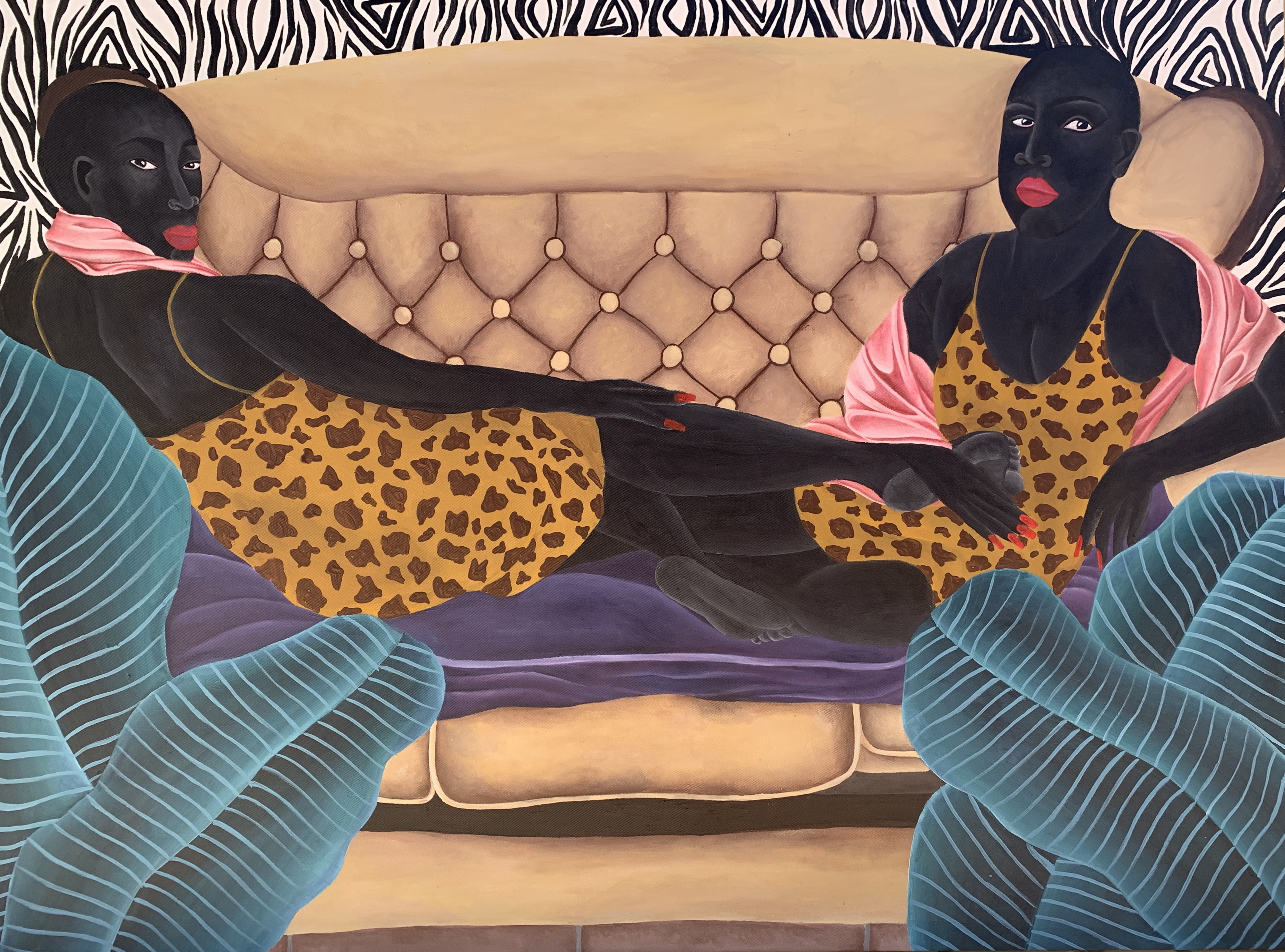“Every society – more importantly, African society – needs to define for themselves the direction [and] meanings they want to give to their collective adventure,” says Dr Felwine Sarr, philosopher, economist and scholar at Duke University, in conversation on the webinar titled,
style="font-weight: 400;">“Defining the ‘We’ and the ‘Us’”, organised by the Zeitz Museum of Contemporary Art (MOCAA).
The webinar forms part of a year-long discursive programme in collaboration with the Institute for Humanities in Africa at the University of Cape Town to address topics around global Black subjectivity and Black representation, with a focus on the role of artistic production also expressed through the exhibition, “When We See Us: A Century of Black Figuration in Painting”.
The exhibition debuted on 20 November 2022 and will be running until 3 September 2023. It features nearly 200 artworks created by 154 artists from 28 countries, and, as Tandazani Dhlakama, the exhibition’s co-curator and assistant curator at Zeitz MOCAA explains, it “brings together a myriad artists and their practice in dialogue for the first time”.
From “When They See Us” to “When We See Us”
The title of the exhibition is derived from American filmmaker Ava DuVernay’s 2019 miniseries, “When They See Us”. The series follows the story of five black and brown teenage boys who were wrongly accused of sexual assault against a white woman in New York’s Central Park.
During the conversation, Kimberly Drew, art influencer, writer and the former social media manager of the Metropolitan Museum of Art, explained that by changing the pronoun “they” to “we”, the curators suggest a shift in dialogue, from African realities being the “object of discourse” by others, to an internal evaluation of collective self-representation.
“We have to build our own visions, [and be on an] active pursuit of rejecting being an object of discourse,” she says. “And really [say] on our terms: ‘This is who we are, this is who we were’, such that future generations understand that they’re not sovereign… that they’re not alone.”
/file/dailymaverick/wp-content/uploads/2022/12/When-We-See-Us-08-1.jpg)
/file/dailymaverick/wp-content/uploads/2022/12/When-We-See-Us-11-1.jpg)
Dr Sarr explains that, during some historical sequences, “Africans have been dehumanised” and that the project of rehumanising the life and world of African societies remains an urgent task.
Drawing from history and cultural heritage, the active task of building the present and future narratives of African societies is executed in a “space of invention and creativity.
“It’s what I call the Afrotopia or Afrotopos: It is a place that is not yet here, but we can (make it happen by bringing) in the historical reality (and) by thinking, imagining and acting,” says Sarr.
In summary, the exhibition applies a strong focus on finding more complex ways to critically engage with Black identities and histories from pan-African and pan-diasporic perspectives to craft a narrative for present and future generations.
“This exhibition is a true reflection of the historic contexts of African and Black existence, with the oldest artist in the exhibition born in 1886 and the youngest in 1999. It amplifies a historical continuum of self-representation while highlighting important contributions towards a previously understated canon,” says Dhlakama.
While the exhibition largely comprises paintings from the last 100 years by artists working globally, these works are brought “into dialogue with leading Black thinkers, writers and poets who are active today”.
Designed by Wolff Architects, “When We See Us” is organised around six themes: The Everyday, Joy and Revelry, Repose, Sensuality, Spirituality, and Triumph and Emancipation, and “celebrates the resilience, essence and political charge of Black joy”.
A tour towards triumph and emancipation
The Everyday aims to encompass the beauty found in everyday practices. From conversing in an open car boot in Marc Padeu’s “All the light on me” (2021), to fixing a paint job and lounging in Meleko Mokgosi’s mural, “Pax Kaffraria: Graase-Mans” (2014).
When you attend the exhibition, pick up the booklet at the museum’s entrance – it shines a light on the story behind the artworks and the conversation between them.
For example: “Artists such as Moké and John Biggers remind us that home is where the community is… Here we come together in our backyards, in the field, on our front stoeps, in the garden and at our dinner tables, for the elders to pass down life lessons, or to be encircled by sisters, brothers and other kin that may or may not be blood-related…
“Whether it is in the routine of water carrying, reading, running, knitting, beer drinking or braiding hair, we express joy and revel in our being.”
Joy and Revelry calls for a celebration of life, and that “every occasion calls for a song and for dance”. Whether this “collective merrymaking” is in Moké’s “Kin oyé ou Couloir Madiokoko à Matonge”’s (1983) club with colourful lights bouncing off bodies and drinks on round tables, or in Jacob Lawrence’s tranquil joy amongst friends around a card table in “The Card Game” (1953), the African and African-descent subjects in these works “radiate fun”.
The message of joy being found in all spaces is effectively communicated by placing these contrasting paintings next to each other. The viewer is lead from a more tranquil and quiet joy in “The Card Game” to the loud enjoyment of music and drinks in “Kin oyé ou Couloir Madiokoko à Matonge”.
/file/dailymaverick/wp-content/uploads/2022/12/Moke_Kin-oye-ou-Couloir-Madiokoko-a-Matonge_1983_Oil-on-canvas_67-x-87cm-1.jpg)
From merriment and laughter, the viewer continues to a more peaceful indulgence in the exhibition’s next section, Repose.
“This is the dreamscape of slow wondrous living, of radical self-preservation, for mind-body-soul connection and of unapologetic rest.”
This section arguably embraces the subjective notion of redefining the “direction” and “meanings” towards a “collective adventure” that Sarr refers to in the webinar,




 Zandile Tshabalala, “Two reclining women” (2020), Acrylic on canvas, 122 x 91.5cm. Image: Supplied/Zeitz MOCAA
Zandile Tshabalala, “Two reclining women” (2020), Acrylic on canvas, 122 x 91.5cm. Image: Supplied/Zeitz MOCAA /file/dailymaverick/wp-content/uploads/2022/12/Mickalene-Thomas_Never-Change-Lovers-in-the-Middle-of-the-Night_2016_Rhinestones-acrylic-and-enamel-on-wood-panel_182.8-x-182.8cm-1.jpg)
/file/dailymaverick/wp-content/uploads/2022/12/Jacob-Lawrence_Genesis-Creation-Sermon-V-And-God-Created-All-the-Fowls-of-the-Air-and-Fishes-of-the-Seas_1989_Gouache-on-paper_75.5-x-55.8cm-1.jpg)
/file/dailymaverick/wp-content/uploads/2022/12/Cheri-Cherin_Revolution-Obama_2009_Acrylic-and-oil-on-canvas_200cm-x-300cm-1.jpg)